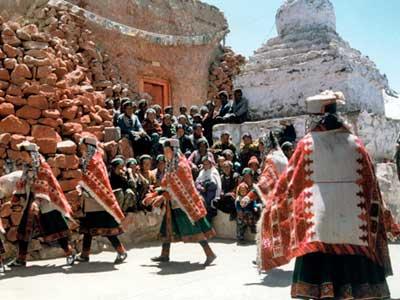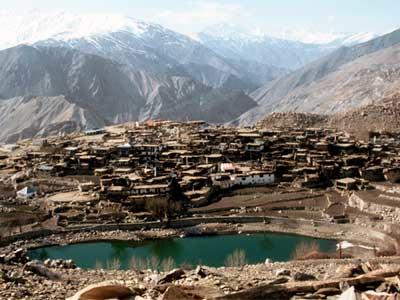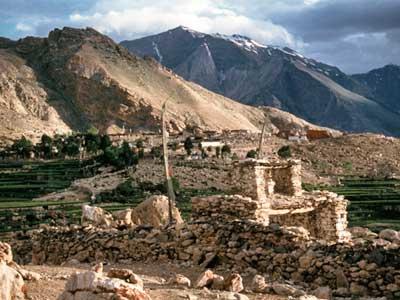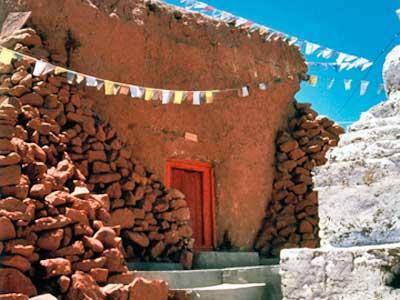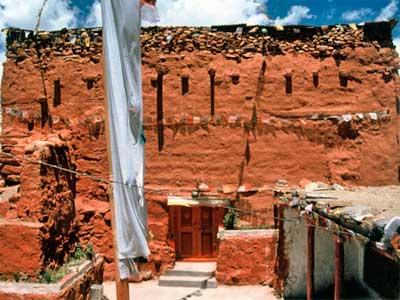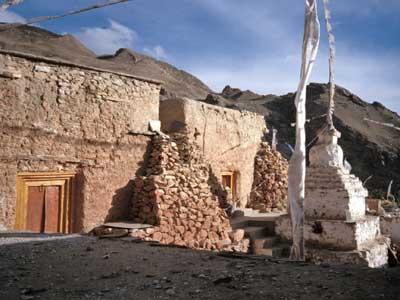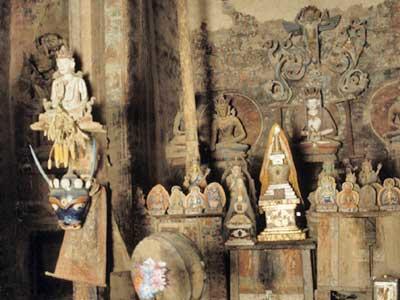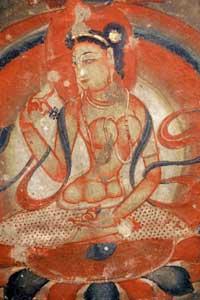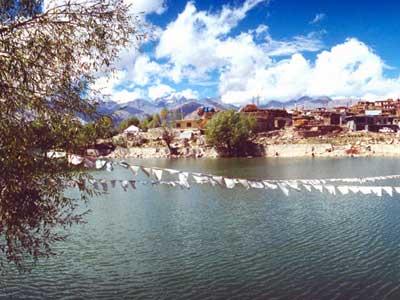Nako Temples
Situated 3,600 meters above the Spiti River, Nako is one of the most isolated villages on earth. Its location in the western Himalayas makes it virtually impossible to reach during the winter months. Despite the difficulties encountered in reaching Nako today, in the Middle Ages it was a significant Buddhist center. Seven temples survive in the village, four of which date from the twelfth century and are clustered in a sacred compound at the village edge. Two of these, Lotsaba Lhakhang and Lhakhang Gongma, retain largely unaltered wall paintings and clay sculptures created when the structures were built. Over time, many of the temples in Nako deteriorated due to the lack of adequate maintenance to ensure their structural integrity, which allowed water to infiltrate. Excess moisture damaged many decorative surfaces and caused wooden elements to rot.
2002 World Monument Watch
In 2002, WMF supported the University of Vienna in the completion of a comprehensive survey of the Nako temples and in the implementation of emergency stabilization measures. In 2003 and 2004 WMF, through the Robert W. Wilson Challenge to Conserve Our Heritage, supported conservation projects including the production of traditional adobe blocks, which were installed to replace stones previously inserted in the walls by villagers attempting to repair the structures. Concrete floors—which were trapping water in and around the foundations, thus creating rising damp that was damaging the adobe—were removed and replaced with earthen floors. The earthen floors allow water to flow off and away from the temples and adjacent terraces. The painted portions of the wooden roofs were restored and reinstalled as non-load-bearing elements.
Built of wood and rammed earth, the Nako temples are a rich source of art-historical information on early Buddhism in the Himalayan region. The paintings within the temples display a large number of technical and iconographic innovations, including the earliest known rendering of a fully developed mandala with gates, a fire circle, and attendant non-Buddhist deities. The use of high relief adorned with gold and silver is impressive. Through a series of field mock-ups that were monitored over time, appropriate methods of conservation were developed to protect the structures’ historic fabric and to restore damaged portions. The project’s training component helped ensure that local craftspeople are in place to maintain the temples.

